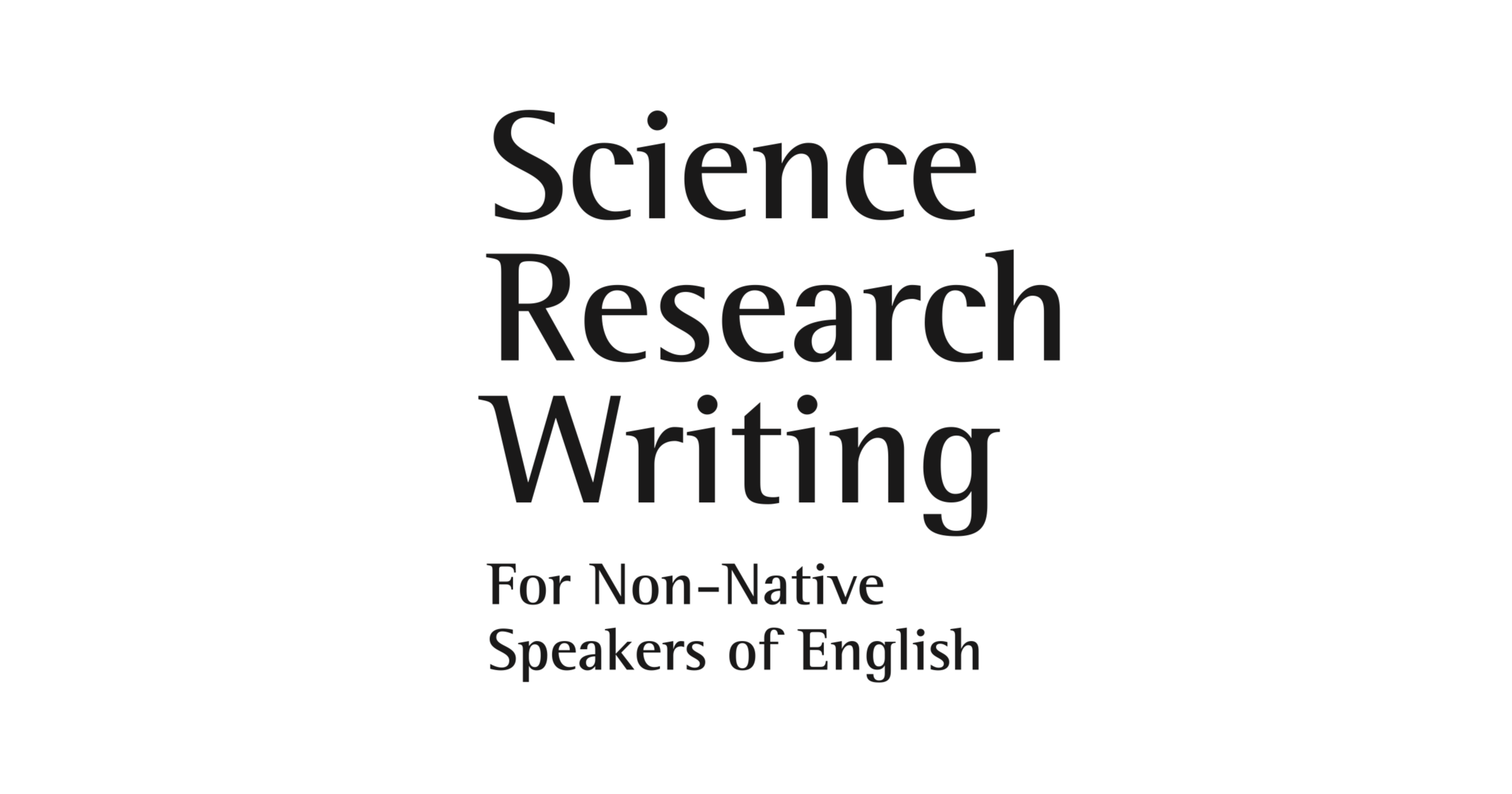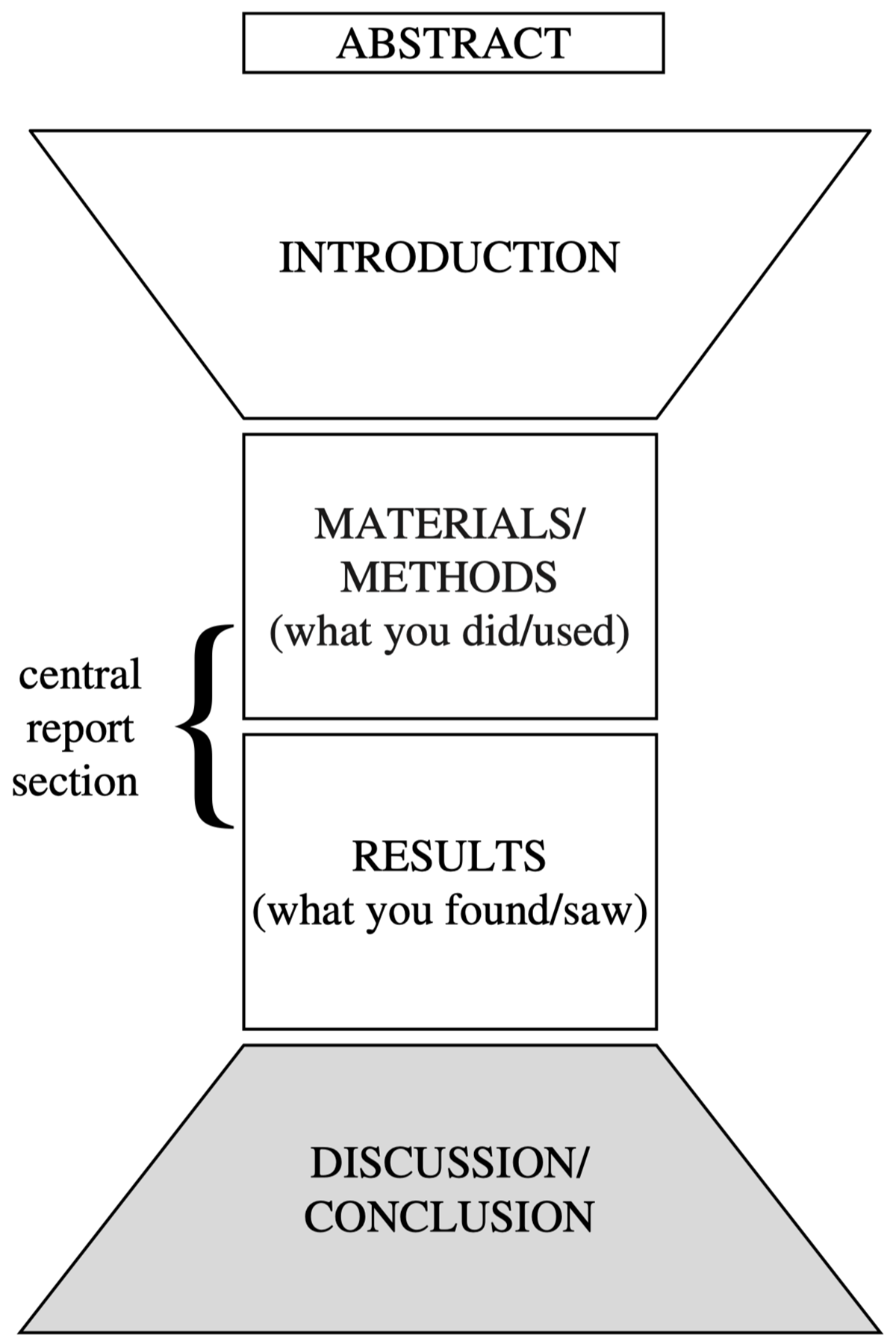Science Research Writing - Discussion/Conclusion
Science Research Writing for Non-Native Speakers of English by (Glasman-Deal, 2009) takes all the credit for images and examples.
Structure
Information Flow
A Model for Discussion / Conclusion
A useful writing model can be transferred, but don’t expect a perfect model.
All models are wrong, but some are useful. The famous quote about statistical models by George E.P. Box also applies to writing models.
Four Basic Components
| Model Components |
|---|
| Part I |
| Revisiting previous sections |
| Summarizing/Revisiting general or key results |
| Part II |
| Mapping the present work into the research map |
| Part III |
| Achievement/Contribution |
| Refining the implications |
| Part IV |
| Limitations |
| Current and future work |
| Applications |
Train of Thoughts
In this section, the message that you’d like to send to your readers is:
Something is a possible reason, or an obvious interpretation, or a probable implication.
A good writing model for the Discussion/Conclusion section should answer the following questions:
- How do writers normally start the Discussion/Conclusion?
- What type of information should it contain, and in what order?
- How do writers normally end the Discussion/Conclusion?
In the Discussion/Conclusion section (in contrast to the Introduction section), you
- Begin by revisiting some aspects of your work to create a reverse interface.
- Move away from your relatively narrow research focus to a wider, more general focus.
- End by helping your readers move out of the article.
- Locate your study in relation to that research map.
- Articulate to what extent you have responded to that gap or solved the problem.
You will normally outline the limitations of your own work, but this is NOT expressed as a problem with your work, rather it provides suggestions for future work. This invitation to the research community improves the status of your work by communicating that there is much research to be done in this area.
- Use will to communicate your own intentions or work in progress.
- Use should to invite research from others.
Grammar and Writing Skills
Modal Verbs
Modal verbs are often used to modify the “truth value” of a sentence. They are difficult to use for mainly two reasons. First of all, some modal verbs have more than one meaning. Therefore, make sure you know exactly what’s your implication when you are using a modal verb. Second, most modal verbs do not follow standard grammar rules. Some disappear and others change their meaning in the negative, or in a different tense.
Some use of modal verbs, such as suing may and can to request permission, are not included because they are not useful in science research writing.
Ability/Capability
| Tense | Form | Example |
|---|---|---|
| Present Simple | can | This software can distinguish between different viruses. |
| Present Simple Negative | cannot | Until 18 months a child cannot use symbols to represent objects. |
| Past Simple | could | It was found that the gun could shoot accurately even at 300 meters. |
| could have | If we had extended the time period we could have produced more crystals. | |
| Past Simple Negative | could not | In 1990, 80% of households could not receive digital television. |
| could not have | The subjects reported that they could not have fallen asleep without medication. |
- For Future Simple tense, you need to switch to be capable of or be able to.
- Could means “was generally capable of doing/was able to do something in the past”, whereas was able to is used in relation to specific past events or past occasions. Generally speaking, be able to is a safer choice when you are not sure which to use.
Possibility/Options
| Tense | Form | Example |
|---|---|---|
| Present Simple | may might could can | A rubber seal may/might/could/can be useful at this location. |
| Present Simple Negative | may not might not | A rubber seal may not/might not be useful at this location. |
| Past Simple | may have might have could have | The fall in pressure may have been/might have been/could have been caused by leakage. |
| Past Simple Negative | may not have might not have | The fall in pressure may not have been/might not have been caused by leakage. |
well can be added to communicate a stronger belief in the possibility.
This may well be due to leakage.
might is slightly weaker than may
can not and cannot don’t mean the same thing at all!
- can not means possibly not in the same way as may not or might not
- cannot means impossible
Probability/Belief/Expectation
| Tense | Form | Example |
|---|---|---|
| Present Simple | should ought to | The material should remain stable if it is kept below 30°C. |
| Present Simple Negative | should not ought not to | It is clear that contamination cannot/could not be due to the presence of sea water in the pipe. |
| Past Simple | should have ought to have | Our results indicate that contamination must have been due to the presence of sea water in the pipe. |
| Past Simple Negative | should not have ought not to have | It was clear that contamination could not be/cannot have been/could not have been due to the presence of sea water in the pipe. |
*Although ought to means the same as should, it’s less common in science research writing.
Virtual Certainty
| Tense | Form | Example |
|---|---|---|
| Present Simple | must have to | Our results indicate that contamination must be due to the presence of sea water in the pipe. |
| Present Simple Negative | cannot | It is clear that contamination cannot/could not be due to the presence of sea water in the pipe. |
| Past Simple | must have | Our results indicate that contamination must have been due to the presence of sea water in the pipe. |
| Past Simple Negative | cannot have could not could not have | It was clear that contamination could not be/cannot have been/could not have been due to the presence of sea water in the pipe. |
- “virtual certainty” modals communicate the fact that no other explanation is possible.
- have to is less common in science writing, so examples have not been given.
- must not means “not allowed/permitted”, it doesn’t mean “not possible”.
Advice/Opinion
| Tense | Form | Example |
|---|---|---|
| Present Simple | should ought to | The apparatus should be disconnected from the mains during repairs. |
| Present Simple Negative | should not ought not to | This material should not be exposed to sunlight. |
| Past Simple | should have ought to have | Our results indicate that contamination must have been due to the presence of sea water in the pipe. |
| Past Simple Negative | should not have ought not to have | It was clear that contamination could not be/cannot have been/could not have been due to the presence of sea water in the pipe. |
Necessity/Obligation
| Tense | Form | Example |
|---|---|---|
| Present Simple | must need to have to | The apparatus must/needs to/has to be disconnected from the mains during repairs. |
| Present Simple Negative | need not do not need to do not have to | The apparatus need not/does not need to/does not have to be disconnected from the mains during repairs. |
| Past Simple | needed to had to | We needed to/had to heat the valves before use. |
| Past Simple Negative | did not need to did not have to need not have | We did not need to/did not have to heat the valves before use. We need not have heated the valves before use. |
Vocabulary
Mapping
| This/Our study/method/result/approach is… | This/Our study… | |
|---|---|---|
| analogous to | broadens | modifies |
| comparable to | challenges | proves |
| compatible with | compares well (with) | provides insight into |
| consistent with | confirms | provides support for |
| identical (to) | contradicts | refutes |
| in contradiction to | corresponds to | supports |
| in contrast to | corroborates | tends to refute |
| in good agreement (with) | differs (from) | verify |
| in line with | extends | |
| significantly different (to/from) | expands | |
| the first of its kind | goes against | |
| (very/remarkably) similar (to) | lends support to | |
| unlike | mirrors |
Achievement/Contribution
*Science writing does not generally permit the use of the exclamation mark (!), but the vocabulary used to state your achievement or contribution can still communicate that the achievement is exciting.
Exclamation Mark Substitutions
| Col 1 | Col 2 |
|---|---|
| compelling | overwhelming |
| crucial | perfect |
| dramatic | powerful |
| excellent | remarkable |
| exceptional | striking |
| exciting | surprising |
| extraordinary | undeniable |
| ideal | unique |
| invaluable | unusual |
| outstanding | unprecedented |
| vital |
Positive Language
| Adjective | Verb |
|---|---|
| accurate | assist |
| advantage | compare well with |
| appropriate | confirm |
| attractive | could lead to |
| beneficial | enable |
| better | enhance |
| clear | ensure |
| comprehensive | facilitate |
| convenient | help to |
| convincing | improve |
| correct | is able to |
| cost-effective | offer an understanding of |
| easy | outperform |
| effective | prove |
| efficient | provide a framework |
| encouraging | provide insight into |
| evident | provide the first evidence |
| exact | remove the need for |
| feasible | represent a new approach to |
| flexible | reveal |
| important | rule out |
| low-cost | solve |
| novel | succeed in |
| productive | support |
| realistic | yield |
| relevant | |
| robust | |
| simple | |
| stable | |
| straightforward | |
| strong | |
| successful | |
| superior | |
| undeniable | |
| useful | |
| valid | |
| valuable |
Limitations/Current and Future Research
| Col 1 | Col 2 |
|---|---|
| a/the need for | possible direction |
| at present | promising |
| encouraging | recommend |
| fruitful | remain to be (identifi ed) |
| further investigations | research opportunities |
| further work is needed | should be explored |
| further work is planned | should be replicated |
| future work/studies should | should be validated |
| future work/studies will | should be verifi ed |
| in the future, care should be taken | starting point |
| in the future, it is advised that… | the next stage |
| holds promise | urgent |
| interesting | worthwhile |
| it would be beneficial/useful |
Applications/Applicability/Implementation
| Col 1 | Col 2 |
|---|---|
| eventually | apply |
| in future | have potential |
| soon | implement |
| possible | lead to |
| produce | |
| use | |
| utilize |
Reference
- Glasman-Deal, H. (2009). Science research writing for non-native speakers of English. World Scientific.

